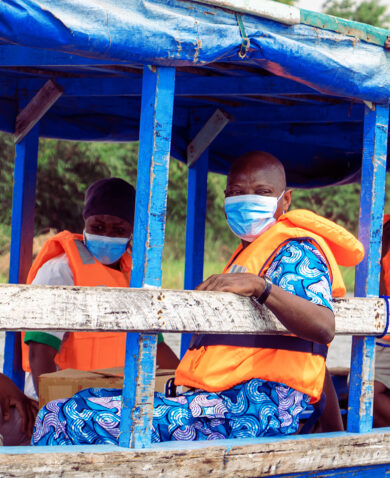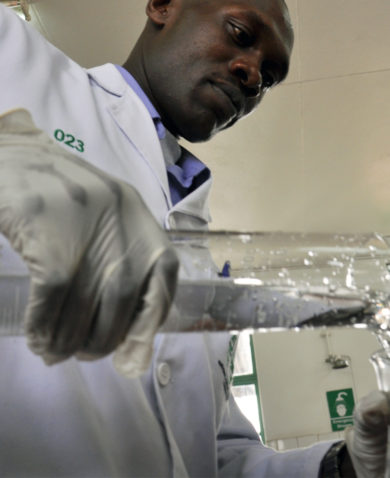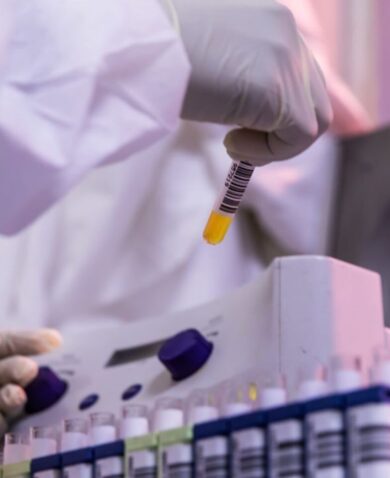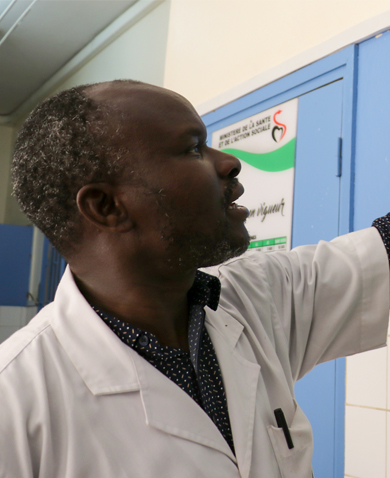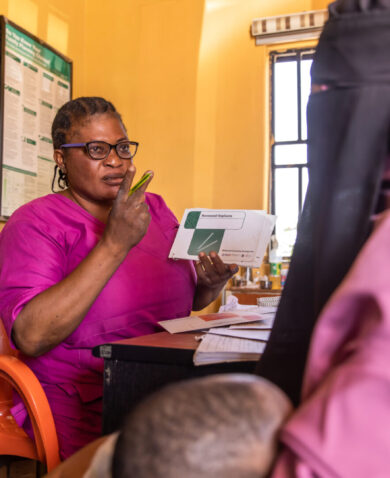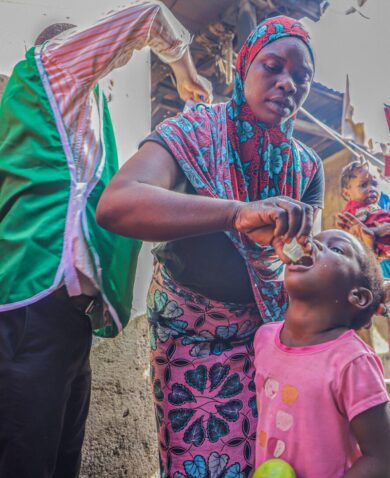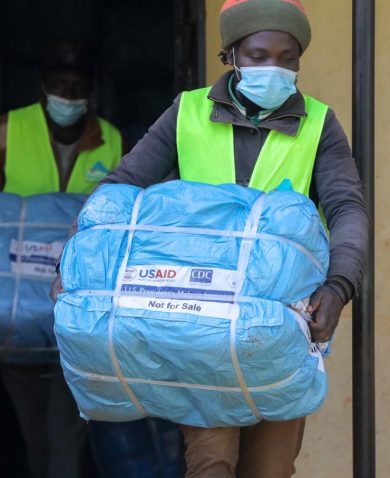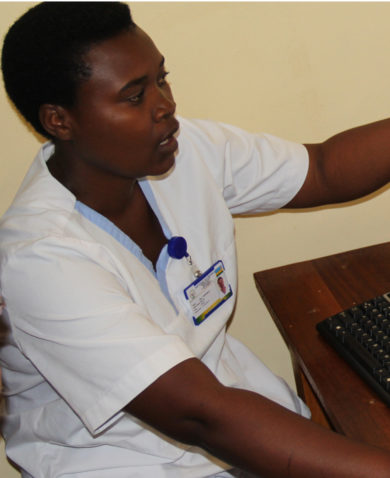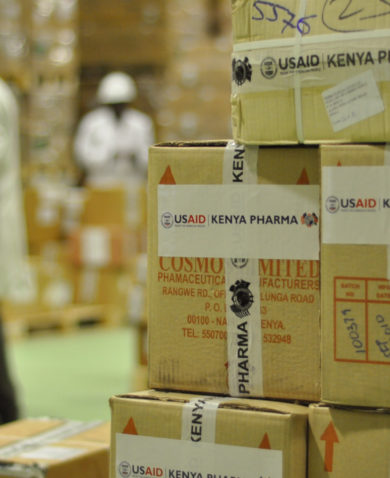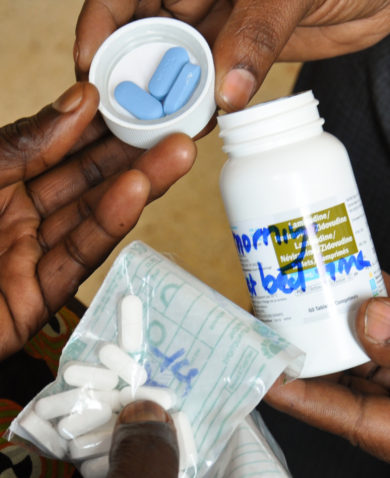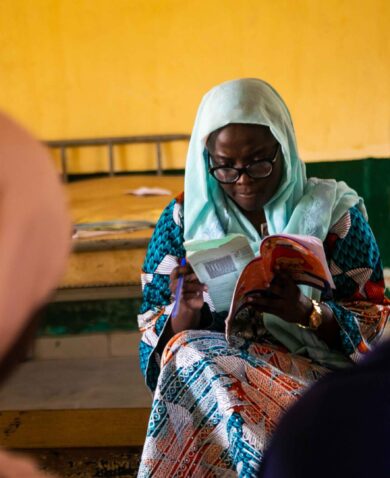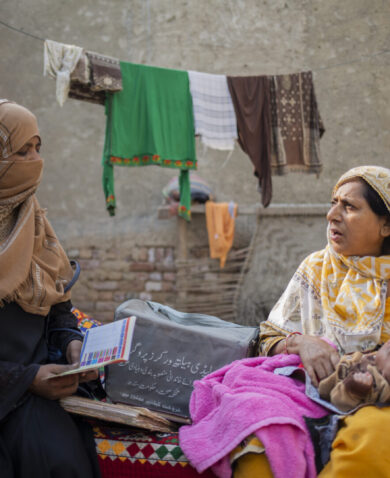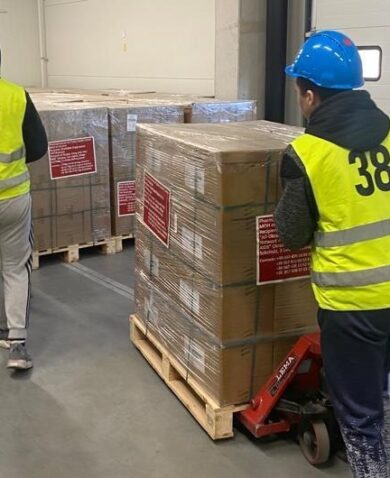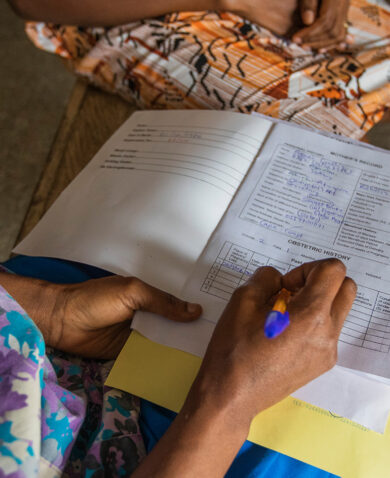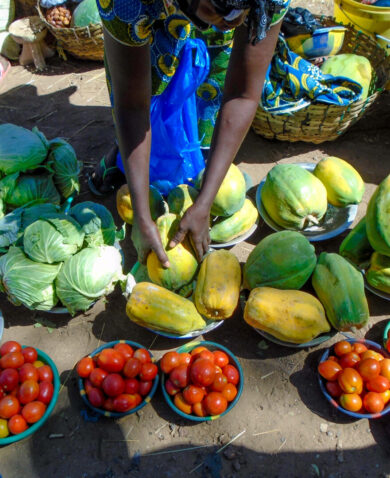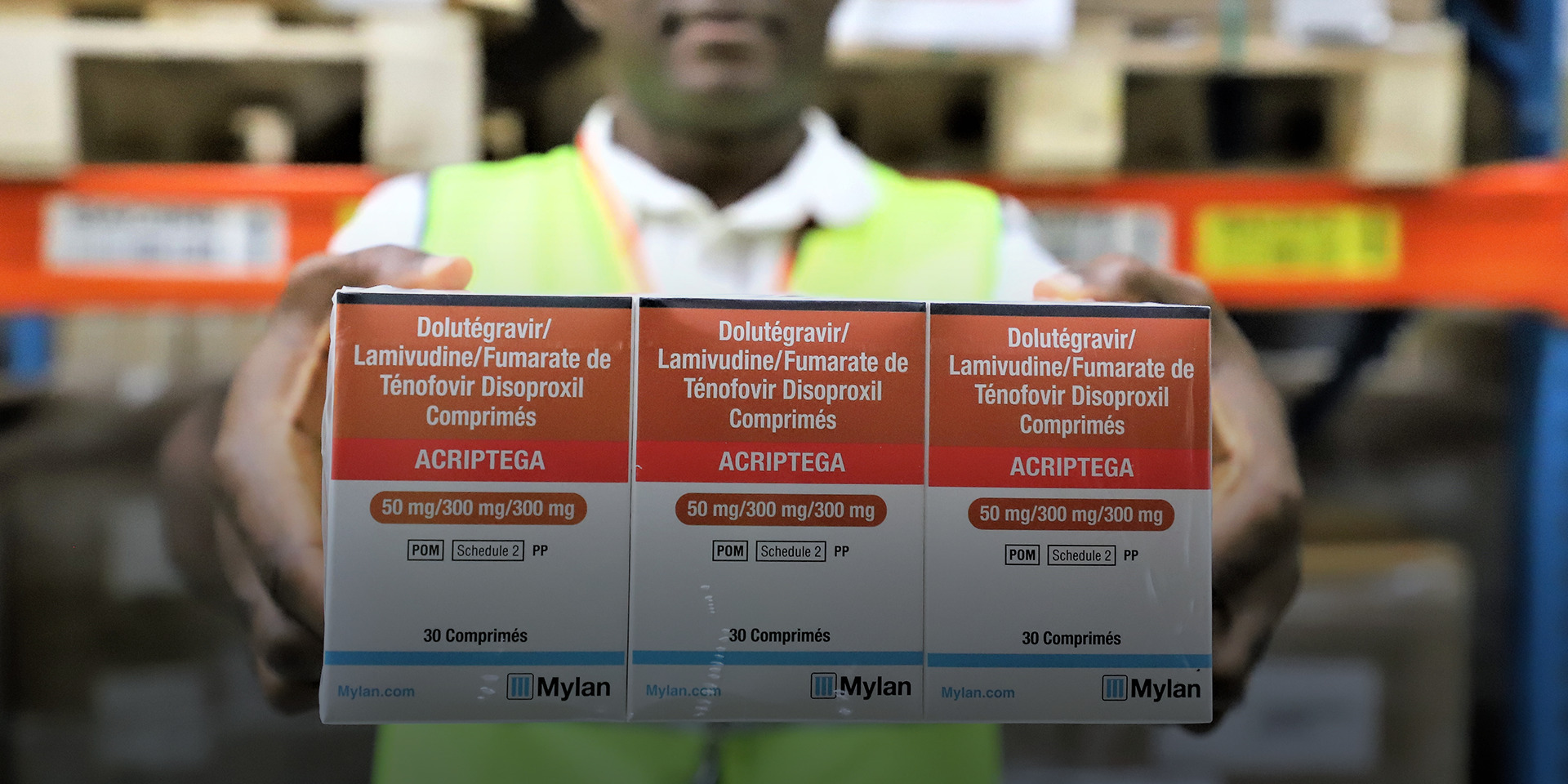
3 Questions with Dr. Theo Faruna on Ensuring Access to HIV Commodities in Nigeria
July 6, 2023 | 4 Minute ReadThe Chemonics-led GHSC-PSM Director of Laboratory & Logistics in Nigeria discusses progress on ensuring access to HIV commodities and sustaining these improvements in the future.
 1. What are the greatest challenges related to logistics and supply chain management in Nigeria, particularly as they relate to HIV/AIDS commodity transportation and delivery?
1. What are the greatest challenges related to logistics and supply chain management in Nigeria, particularly as they relate to HIV/AIDS commodity transportation and delivery?
Before 2012, the government-implemented Nigeria HIV program operated more than 18 parallel supply chains, which were ineffective and resulted in stockouts and expiries. The unification of these supply chains commenced in July 2012 after the governments of Nigeria and the United States signed a partnership agreement in 2010. By July 2014, the integration was complete, resulting in significant gains for HIV/AIDS efforts in the country, such as increased health facility reporting rates, decreased stockout rates and expiries, streamlined reporting tools and timelines, unified and efficient warehousing, and a last mile distribution system. This country-led program operates a pool system, which is a unified resource and commodity utilization arrangement for HIV/AIDS commodity management that involves a national determination of commodity needs, resource pooling across different funding support, harmonized warehousing utilizing a chain of warehouses, and routine third-party logistics (3PL) partner-facilitated distribution according to health facility needs.
There are numerous benefits to the above paradigm, but it also comes with challenges summarized in a report by the National Agency for the Coordination of HIV and STDs Programme (NASCP). The first is low-quality data caused by the variance between patients per regimen data and service data from the program, attributed to the attrition of personnel skilled in reporting in the logistics management information system at the facility level. Another critical challenge noticed is the inadequate government funding to procure HIV commodities and undertake technical activities such as forecasting and supply planning. Most financing for procuring HIV commodities currently comes from donor agencies like PEPFAR (the President’s Emergency Plan for AIDS Relief) and the Global Fund. Also, inflexible government regulatory agency mechanisms to accommodate the peculiarities of HIV commodities places hurdles on bringing in lifesaving medicines and laboratory commodities. Finally, inadequate pharma-grade warehouses and pallet capacity at only two national warehouses (Abuja and Lagos) come with high cost of waste management because there are no government-owned facilities.
2. How has the Chemonics-led USAID Global Health Supply Chain Program-Procurement and Supply Management (GHSC-PSM) project helped address these challenges and ensure the availability of HIV/AIDS commodities across the country, especially in hard-to-reach communities?
GHSC-PSM Nigeria envisions an optimized supply chain management system led by the government of Nigeria. This vision aims to ensure that activities are focused on providing lifesaving medicines and health commodities while establishing efficient, reliable, and cost-effective supply chains for delivering these drugs and commodities to patients and other clients across the country. The strategic goal of GHSC-PSM is for Nigeria to have a locally led health supply chain that is integrated, optimized, accountable, agile, lean, and capable of sustainably providing quality products to all citizens.
To ensure the delivery of HIV/AIDS commodities to hard-to-reach communities, GHSC-PSM has provided technical support with mentoring to major warehouses, including receiving, storing, pick and pack operations, engaging vendors for last mile delivery to facilities, and maintaining transaction records for reporting to funders. GHSC-PSM has started mentoring subnational entities to enable state-led last mile distribution, including training government staff to lead the conduct of assumption building workshop, quantification, and supply plan exercises. The aim is for state governments to take the lead in making commodities available to all facilities. The GHSC-PSM project is still supporting the Procurement and Supply Management Technical Working Group to facilitate discussions that contribute to the availability of commodities nationwide through the national quarterly meeting.
One of the key pillars of the Nigeria HIV Program is the attainment of the UNAIDS 95-95-95 strategy. GHSC-PSM, with funding from USAID, oversees the integrated samples referral network, which plays a crucial role in achieving the third 95 (viral suppression) by monitoring the viral load suppression rate among individuals on antiretroviral therapy. Worthy of mention is the funding to support the training in and use of the Quantification Analytics Tool (QAT). This modernized solution replaces legacy forecasting and supply planning tools such as PipeLine and Quantimed. The QAT is empowering Nigeria to conduct its own supply planning and forecasting.
3. What recommendations do you have to sustain these improvements to the Nigerian supply chain system in the future?
To sustain the gains achieved so far, the Government of Nigeria, through NASCP and the National Agency for the Control of AIDS should continue to build on the existing framework that incorporates essential skills for forecasting and supply planning activities into the staff orientation program.
The federal Ministry of Health should take deliberate actions to maintain the continuous delivery of commodities from warehouses to healthcare facilities. This will ensure that the facilities always have access to commodities and minimize the occurrences of stockouts or expirations. The state-led last mile distribution should be expanded to all the subnational governments for sustainability. Additionally, government officials have already taken proactive measures in assumption-building, forecasting, and reviewing supply plans through the knowledge acquired from QAT training. It is crucial to consolidate and expand upon this progress. However, there is still much work to be done in transitioning from the conventional government procurement bureaucracy to a streamlined procurement and pipeline monitoring system for HIV commodities and laboratory reagents and consumables. That requires a government–dedicated budget line for HIV commodity security that is not susceptible to manipulation.
To ensure the continuous supply of commodities, the government should continue to provide waivers and address bottlenecks in importing necessary reagents and consumables that are not produced locally. There should also be an appropriate government agency to establish robust memorandums of understanding between funders and state ministries of health to clearly define service levels and accountability frameworks for the drug management agencies/drug revolving funds. These frameworks should include co-financing schemes involving donors, the national health insurance scheme, and community insurance with termination conditions. The government should also sustain the progress achieved by the national integrated specimen referral network, which has facilitated the desired viral load monitoring for individuals undergoing treatment, and early infant diagnosis testing for babies exposed to HIV.
Banner photo: A warehouse worker in Nigeria holds some boxes of recently delivered TLD. Credit: Anthony Abu (2018)
Posts on the blog represent the views of the authors and do not necessarily represent the views of Chemonics.

 1. What are the greatest challenges related to logistics and supply chain management in Nigeria, particularly as they relate to HIV/AIDS commodity transportation and delivery?
1. What are the greatest challenges related to logistics and supply chain management in Nigeria, particularly as they relate to HIV/AIDS commodity transportation and delivery?











